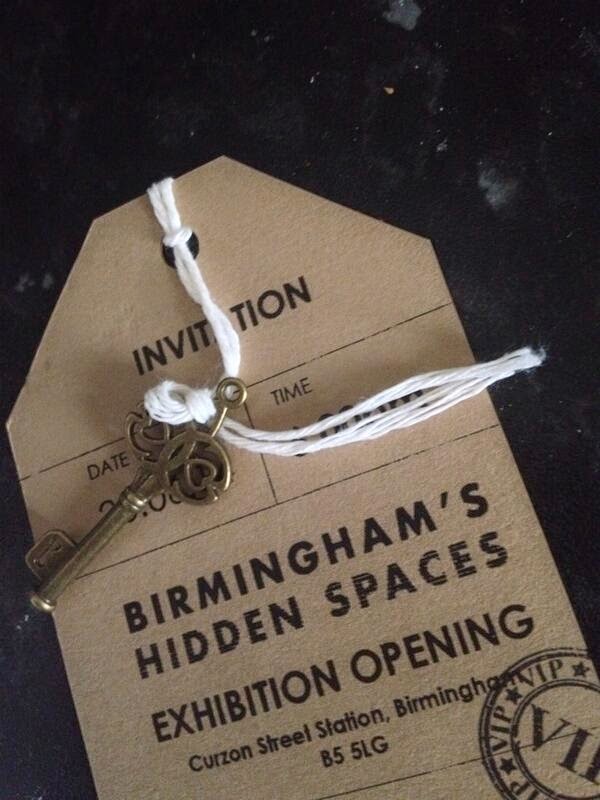Hidden Birm(in)gham
Excusing my clever pun with words in the title, the 21st June sees the Hidden Spaces Birmingham Exhibition open up the Grade I listed Curzon Street Station for an exhibition using photography and media looking at the hidden spaces of Birmingham.
The exhibition is part of the Royal Institute of British Architects (RIBA) Love Architecture Festival which now in it's third year, Love Architecture Birmingham, aims to celebrate architecture and the built environment through activities and events to inform and excite people of all ages about the built environment, http://www.architecture.com/Explore/ExhibitionsandEvents/LoveArchitectureFestival/LoveArchitectureFestivalWestMidlands.aspx. As well at the exhibition there are walks, behind the scenes tours, family events and architecture clay modelling amongst lots of activities.
The free Hidden Spaces exhibition running from Saturday 21st to Sunday 29th June is a project from Associated Architects in association with the Birmingham Post who produced two Hidden Spaces supplements with articles and images about some lesser-known spaces within the city and the stories of the people who built, lived and worked in these places.
A photo of my copies of the Birmingham Post and enclosed supplements.
For me the photos showing the Anchor Exchange in the supplements, http://www.birminghampost.co.uk/lifestyle/birminghams-hidden-spaces-anchor-exchange-6449340, revealed Birmingham's most exciting hidden space as they showed what had been unknown to many and noted only in a few websites such as Subterranea Britannica, which detailed the available information on the tunnels and This is it...the hush-hush nerve-centre, which reproduces a 1968 Evening Mail article on the tunnels.
The richness and variety of Birmingham's architecture however, goes far deeper than the surface.
Some of the most tangible parts of its history that remain are manifested beneath the surface of the buildings that make up the fabric of this great city, just out of sight in the streets of Birmingham.
http://www.birminghampost.co.uk/incoming/birminghams-hidden-spaces-associated-architects-6443260
The exhibition is housed in one of the featured hidden spaces, Curzon Street Station, which is the oldest railway terminus in the world being the terminus of the first intercity railway link to London, http://www.networkrail.co.uk/virtualarchive/new-street/. The opening of the building for the exhibition is exciting as it is rarely opened and provides an exciting opportunity to see inside. The use of the station is also interesting considering the plans for High Speed 2 (HS2) with Birmingham's planned HS2 station due to sit adjacent to Curzon Street Station with a planned opening to trains in 2026. Curzon Street Station will celebrate it's bicentenary in 2038 only a decade from the opening of the first HS2 link between London and Birmingham acting almost as a reaffirmation of the importance of the first intercity route to London connecting both cities in 1838. Designed by Philip Charles Hardwick it was the counterpart to the demolished Euston Arch, http://www.birminghampost.co.uk/lifestyle/birminghams-hidden-spaces-inside-curzon-6449361
Pictures of Curzon Street Station, courtesy of http://www.hidden-spaces.co.uk/, are shown below.
Other featured hidden spaces in the exhibition include the Chamberlain Clock Tower and the Council House and the Assay Office.
The exhibition's timing and it's focus on hidden spaces seems quite pertinent to the recent response of Coun Philip Davis, http://www.birminghampost.co.uk/news/regional-affairs/city-must-work-together-protect-7253063, to Joe Holyoak's Birmingham Post opinion piece focussing on Moseley Road Baths that argued the council hated civic heritage, http://www.birminghampost.co.uk/news/news-opinion/joe-holyoak-council-hate-civic-7222337
The exhibition is free and open from Saturday 21 to Sunday 29 June 10am - 3pm.






Comments